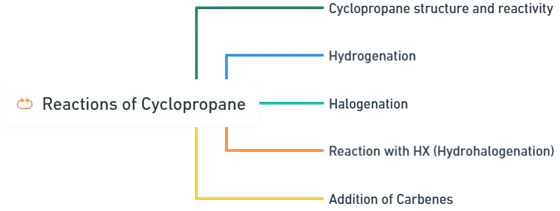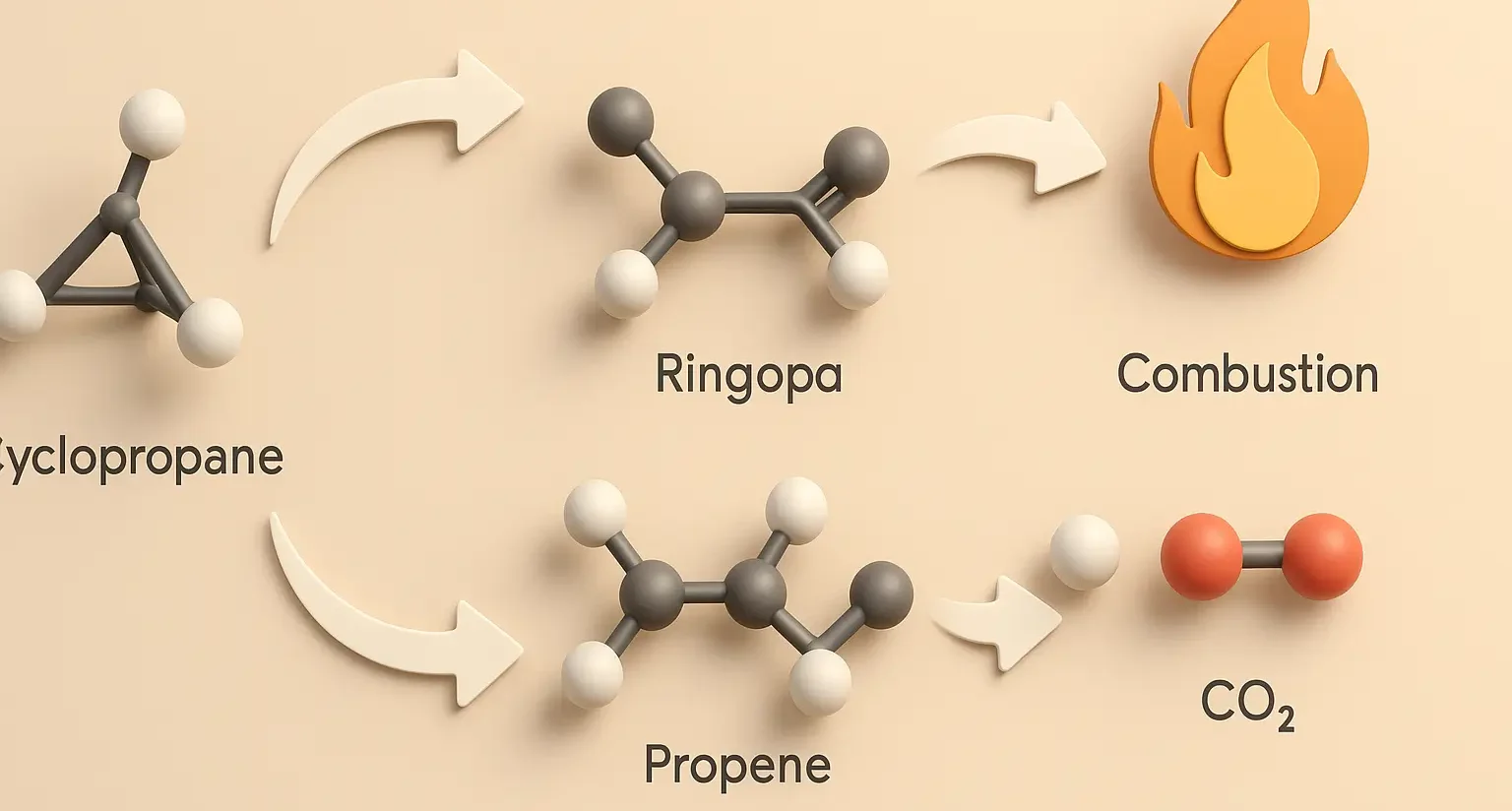- Reactions of Cyclopropane is a three-membered ring with significant angle strain due to its 60° bond angles (compared to the ideal 109.5° for sp³ hybridized carbons).
- This strain makes cyclopropane relatively reactive, particularly in reactions that relieve this strain.

Advertisements
-
Hydrogenation:
- Cyclopropane can be hydrogenated in the presence of a metal catalyst (like Pd/C) to form propane. The reaction breaks the strained C–C bonds and saturates the molecule.
-
Cyclopropane + H2 → Pd/C (reagents)→ Propane
-
Halogenation:
- Cyclopropane reacts with halogens (like chlorine or bromine) under light (hv) or heat to form 1,3-dihalopropane, breaking the ring and relieving strain.
-
Cyclopropane + X2 → hv (reagents)→ 1,3-Dihalopropane (X=Cl,Br)
-
Reaction with HX (Hydrohalogenation):
- Cyclopropane reacts with hydrogen halides (e.g., HCl, HBr) to form 1-haloalkanes (e.g., propyl halides), breaking the ring structure.
-
Cyclopropane + HX → 1-Halopropane
-
Addition of Carbenes:
- Cyclopropane can undergo ring expansion when reacted with carbenes, leading to cyclobutanes or other cyclic compounds, depending on the nature of the carbene.
-
Cyclopropane + Carbene → Cyclobutane (orother derivatives)
Click Here to Watch the Best Pharma Videos
Advertisements

